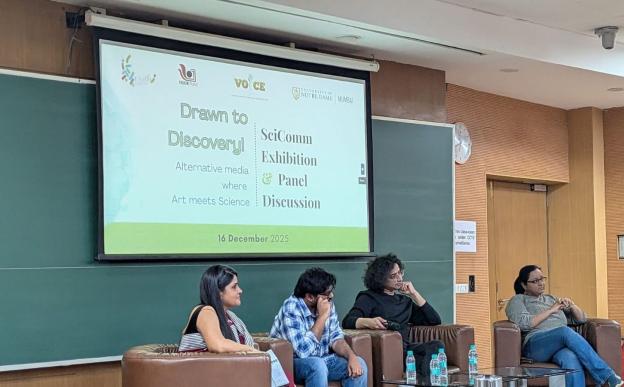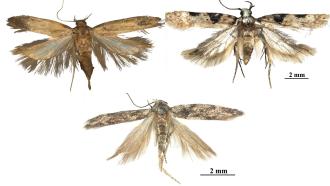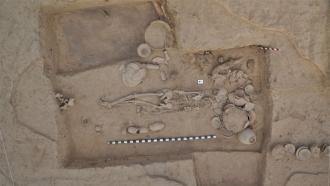
The Covid-19 pandemic and the ensuing worldwide lockdowns has become one of the defining moments of this century. Although things are back to normal now, a look at the Covid-19 dashboard by the Ministry of Health and Family Welfare, shows that there are currently about 3500 active cases, and 4 people have lost their lives in 2025. In order to accurately track the spread of disease, it is essential to monitor the number of cases regularly. However, once the pandemic had passed, widespread testing decreased, and people getting sick weren’t always going to a doctor or getting tested for Covid-19. So, how can public health officials get a clear picture of what's happening across a whole city? Researchers are turning to an unlikely source: wastewater.
Did You Know? As of 24 June 2025, India, with 45,041,748 reported cases of COVID-19 infection, has the second-highest number of confirmed cases in the world, after the United States, and the third-highest number of COVID-19 deaths after the United States and Brazil, at 533,623 deaths. |
A new study from Bengaluru explored how monitoring sewage could be a proxy for tracking diseases like COVID-19, even when clinical testing data is limited. Researchers from Tata Institute for Genetics and Society (TIGS), Biome Environmental Trust, and National Centre for Biological Sciences (NCBS) in Bengaluru have identified bellwether sites, monitoring which could act like early warning systems for future outbreaks.
Individuals infected with SARS-CoV-2, the virus that causes COVID-19, shed the virus's genetic material, or RNA, in their faeces. When sewage from homes and businesses flows into treatment plants, scientists can collect samples and test them for this viral RNA. The amount of virus found in the wastewater can give a snapshot of how much infection is circulating in the community connected to that sewer system. Unlike clinical testing, which only captures data from people who seek healthcare and get tested, wastewater surveillance captures data from everyone using the sewer system, whether they show symptoms, are asymptomatic, or don't get tested. This makes it a more representative picture of community-level infection.
The study was comprehensive, running from December 2021 to January 2024. Researchers collected weekly wastewater samples from 26 major sewage treatment plants (STPs) across the city, covering about 80% of Bengaluru's population of around 11 million people. They used the Reverse Transcription quantitative Polymerase Chain Reaction (RT-qPCR) technique to detect and quantify the amount of SARS-CoV-2 RNA in each sample. They further refined the data, adjusting the raw viral measurements based on the amount of water flowing into the plant and the estimated population size served by that plant. This gave them a normalized viral load, which estimates the amount of virus per person per day in the sewage.
Next, in order to identify the ideal locations that represented the larger trend or bellwether sites, they dug into their data. First, they looked at the trends in viral load over time at each site and across the city, smoothing out the data to see the bigger picture. They identified four main periods when viral levels surged in the city, corresponding to different variants of the virus (like BA.2.10, BA.2.X, XBB, and JN.1). They noticed that the wastewater data often showed these surges, even when clinical case data was minimal, especially after mid-2022 when testing decreased.
The team also sought to determine if the wastewater signal increased before the reported clinical cases in the city. They compared wastewater data from different-sized STPs (small, medium, and large catchment areas) to the city's clinical case counts, looking for correlations at various time delays, such as 0, 7, 14, or 21 days later. They found that wastewater increases often coincided with or slightly preceded increases in clinical cases. The lead was sometimes by about a week or two, depending on the surge and the size of the sewershed. Interestingly, they found that no single size of STP was consistently the best early warning system; different sizes performed better during different phases of the pandemic.
To help automatically identify these surges and distinguish real signals from random fluctuations or noise in the data, the researchers used and adapted a specialised algorithm called COVID-SURGE. The algorithm utilises specific logical rules based on changes in viral load over time, such as a sudden, significant increase or the detection of a previously undetectable strand after a period of low levels, to flag potential community-level surges. They tested how well this algorithm worked at identifying the known surge periods they had already observed.
Based on their analysis, which examined consistent viral trends across different surges and the effectiveness of the COVID-SURGE algorithm in flagging them, they identified 11 STPs as the most promising bellwether sites. These included four large, four medium, and three small sites. These sites were the best performers in capturing the viral dynamics and could serve as a functional, smaller group to monitor the entire city.
The study, however, did face some limitations. The lack of clinical case data, specifically for the populations served by each individual sewage treatment plant, necessitated the use of a larger dataset. They had to compare STP wastewater data to city-wide clinical data, which is not very accurate. They also found that the performance of the COVID-SURGE algorithm varied depending on the specific virus variant circulating and whether viral levels were already high. In periods with high viral diversity or when viral loads were consistently above the detection limit, it was sometimes challenging for the algorithm to distinguish a new surge from existing fluctuations, resulting in some false positive flags during non-surge periods. This highlights that while the algorithm is practical, interpreting the data still requires careful consideration of the context. More granular and extensive data could improve the algorithm and improve the predictions/
Nevertheless, identifying these key sites in Bengaluru could help create a more efficient and cost-effective disease surveillance system. The reliable, community-level data can give public health officials an early heads-up about increasing infections or the emergence of new variants, even when clinical testing is low. This early warning can allow for faster decision-making about implementing public health measures, conserving resources, and ultimately protecting the community from outbreaks of not just COVID-19, but also potentially for other diseases.
This article was written with the help of generative AI and edited by an editor at Research Matters.






